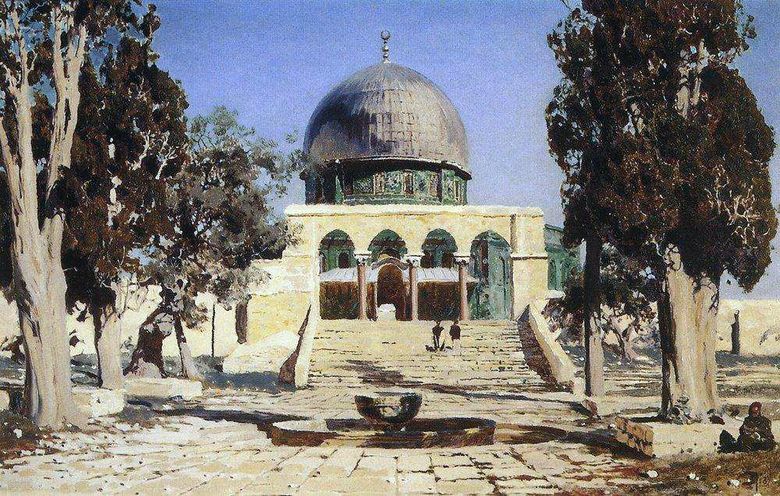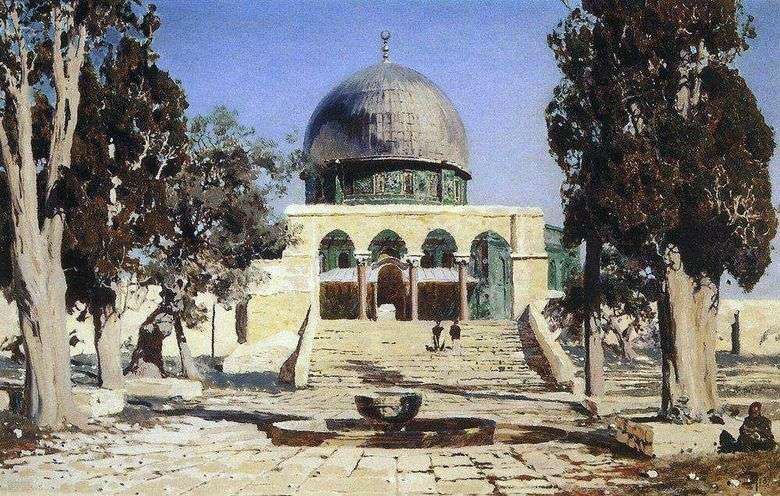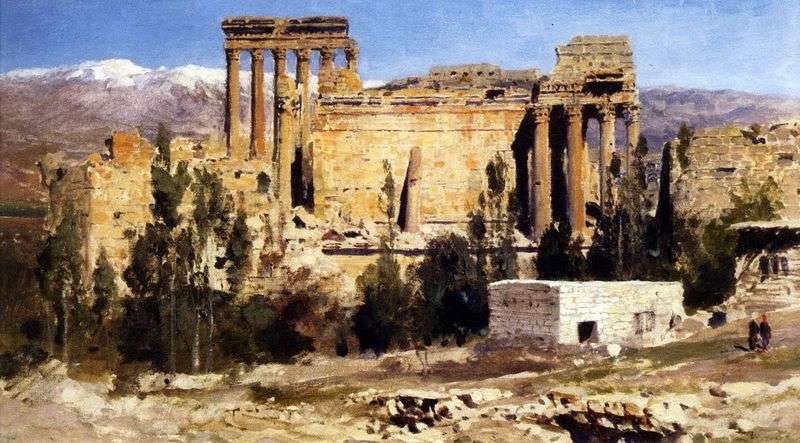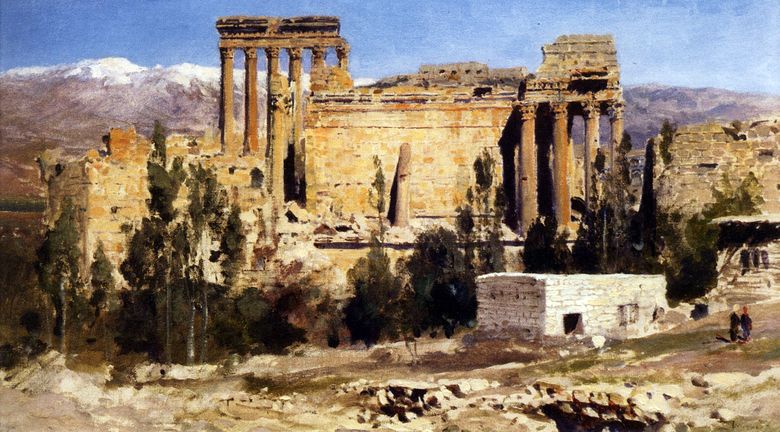
Trips to the East were often undertaken by Russian artists. If the masters of the middle of the XIX century were closer to the ethnographers according to the interpretation of the subjects, then Russian artists, who traveled to the East in the 1880-1890s, more often looked for purely pictorial motifs.
For example, L. M. Zhemchuzhnikov wrote in his memoirs like this: “The East captivated me with its colors, diversity and its lines. I am convinced that an artist who has formed himself in Europe should go to the East. Having studied the subtleties of European faces where passions are masked, he must go to the East to study the sun is hotter, nature, full of bliss, variegation and color combinations, to trace and understand the birth of passions and their manifestation – without a mask. There is a wide scope for colors and psychology. “
Starting direct work on the series “From the Life of Christ” in 1899, Polenov made a second trip to the Middle East to collect materials. He again brought mainly landscape sketches from the trip, which, like the sketches created during the first trip, were shown at the XVII traveling exhibition. “These were vivid records of the paints of the East that startled the artist,” Ostroukhov wrote, “pieces of the azure sea, the peaks of the southern mountains glowing in the colors of sunset, dark cypress spots on the blue deep sky, etc. and at the same time resolving colorful tasks in a completely new way for a Russian artist and in an unusual way.
Polenov in these sketches revealed to the Russian artist the mystery of the new colorful force and awakened in him the courage of such paint handling, which he had not even thought of before. ” , found the exact color relationships right on the canvas, achieving the sonority of color.
At the same time, deeply individual perception of architectural or landscape motifs manifested themselves in sketches, the artist’s ability to fill them with that emotional force, thanks to which natural images sometimes acquire a symbolic meaning. The magnificent southern nature gave Polenov various plots and themes, inspired by fresh, interesting pictorial solutions.
 Haram Al-Sheriff – la place où se trouvait l’ancien temple de Jérusalem – Vasily Polenov
Haram Al-Sheriff – la place où se trouvait l’ancien temple de Jérusalem – Vasily Polenov Autumn in Abramtsevo by Vasily Polenov
Autumn in Abramtsevo by Vasily Polenov Constantinople. Golden Horn by Vasily Polenov
Constantinople. Golden Horn by Vasily Polenov Haram Ash-Sheriff – la plaza donde se ubicaba el antiguo templo de Jerusalén – Vasily Polenov
Haram Ash-Sheriff – la plaza donde se ubicaba el antiguo templo de Jerusalén – Vasily Polenov Baalbek. Ruins of the Temple of Jupiter and the Temple of the Sun by Vasily Polenov
Baalbek. Ruins of the Temple of Jupiter and the Temple of the Sun by Vasily Polenov Lake Genisaret by Vasily Polenov
Lake Genisaret by Vasily Polenov Golden Autumn by Vasily Polenov
Golden Autumn by Vasily Polenov Baalbek. Les ruines du temple de Jupiter et du temple du Soleil – Vasily Polenov
Baalbek. Les ruines du temple de Jupiter et du temple du Soleil – Vasily Polenov